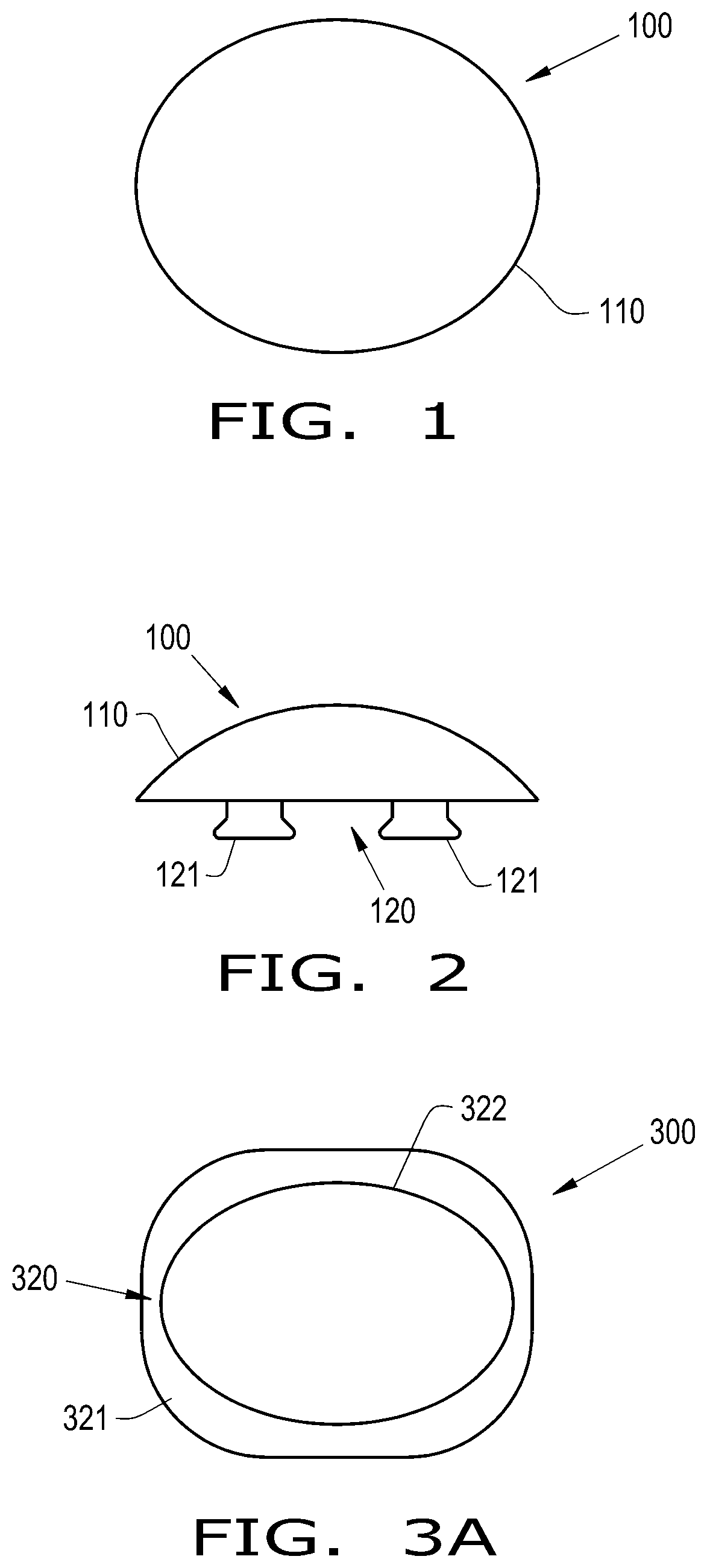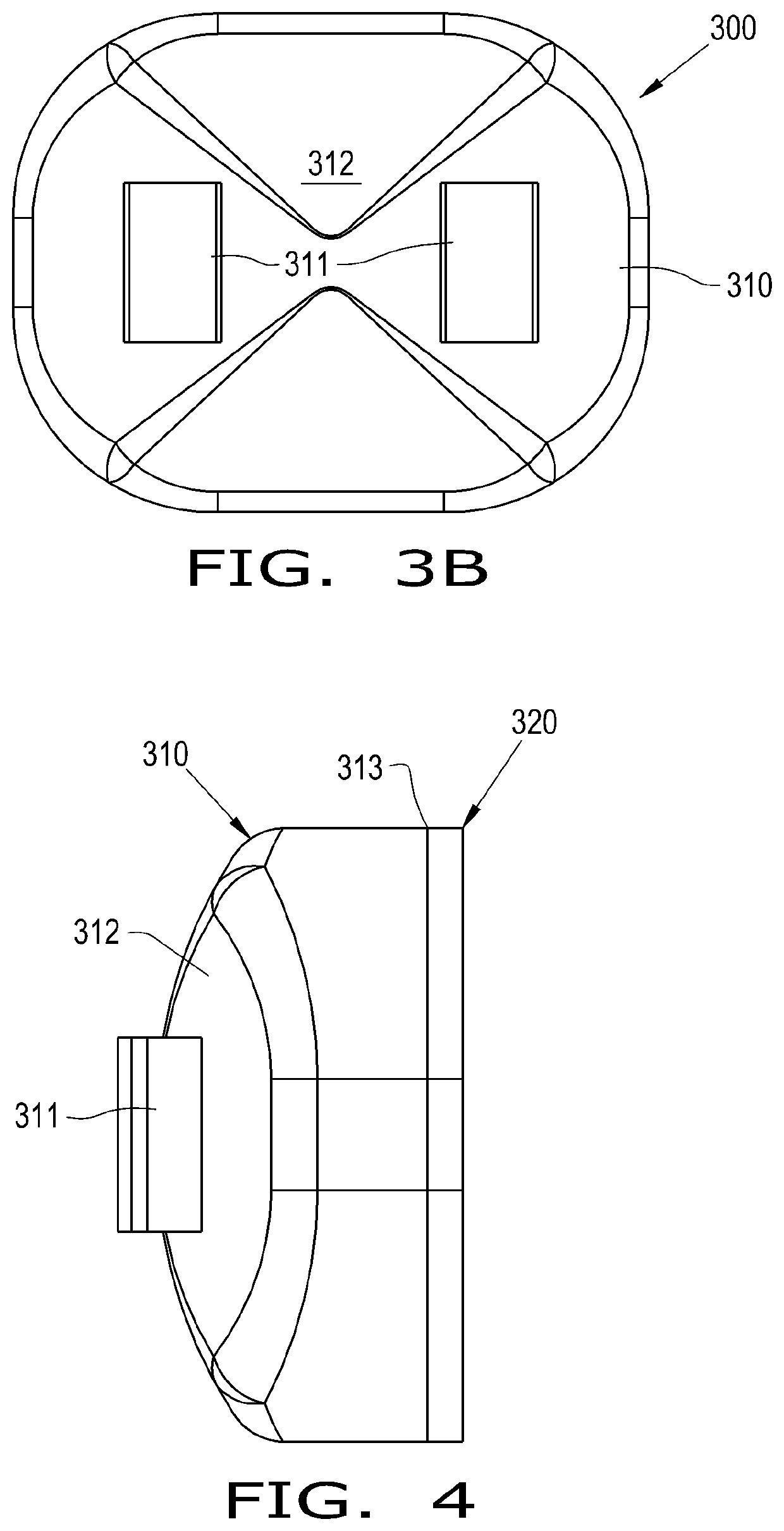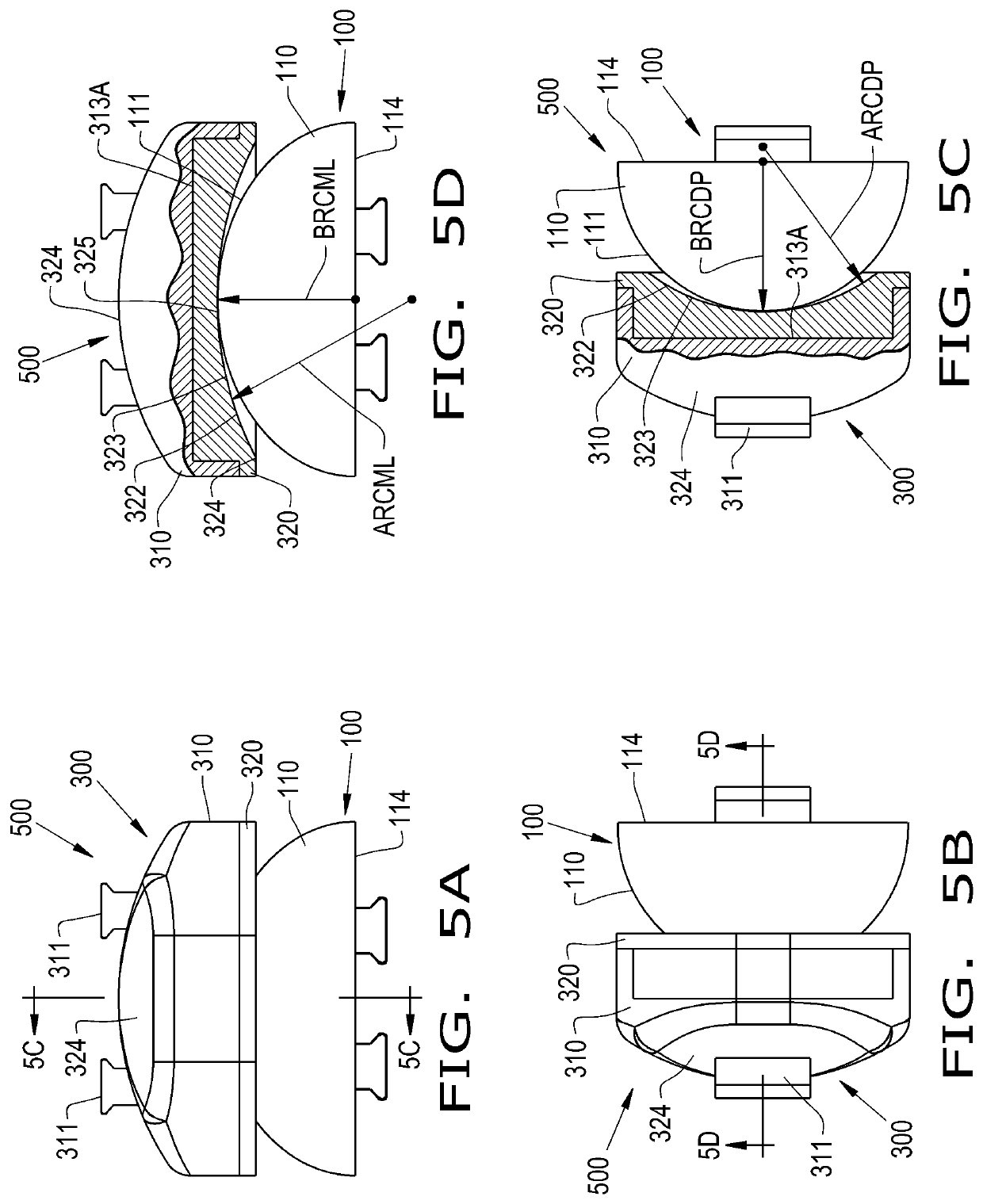Talonavicular joint prosthesis and method of implanting the prosthesis
a technology of talonavicular joint and prosthesis, which is applied in the field of orthopaedic prosthesis, can solve the problems of severe limitations on the ability of people to walk, limited the range of motion of the foot, and implants that have not, so far, adequately restored function
- Summary
- Abstract
- Description
- Claims
- Application Information
AI Technical Summary
Problems solved by technology
Method used
Image
Examples
Embodiment Construction
[0062]Referring now to the drawings, and more particularly to FIGS. 1-5D and 26A-26B, there is shown an exemplary embodiment of a talonavicular joint prosthesis 500 (illustrated in FIGS. 5A-5D) which generally includes a talar component 100, illustrated by itself in FIGS. 1-2 and 26A-26B, and a corresponding navicular component 300, illustrated by itself in FIGS. 3A-4, that are configured to be implanted at a prepared talonavicular site, i.e., in a prepared talus bone and a prepared navicular bone, respectively. The components 100, 300 both comprise one or more biocompatible materials that are suitable for implantation in an anatomical space. Exemplary materials include but are not limited to: biocompatible metals such as titanium, cobalt-chrome, tantalum, and stainless steel; and polymers such as ultra-high molecular weight polyethylene (UHMWPE), polyaryl ether ketones (PAEK) such as polyether ether ketone (PEEK), polylactic acid (PLA), and polyglycolic acid (PGA). In some embodime...
PUM
 Login to view more
Login to view more Abstract
Description
Claims
Application Information
 Login to view more
Login to view more - R&D Engineer
- R&D Manager
- IP Professional
- Industry Leading Data Capabilities
- Powerful AI technology
- Patent DNA Extraction
Browse by: Latest US Patents, China's latest patents, Technical Efficacy Thesaurus, Application Domain, Technology Topic.
© 2024 PatSnap. All rights reserved.Legal|Privacy policy|Modern Slavery Act Transparency Statement|Sitemap



